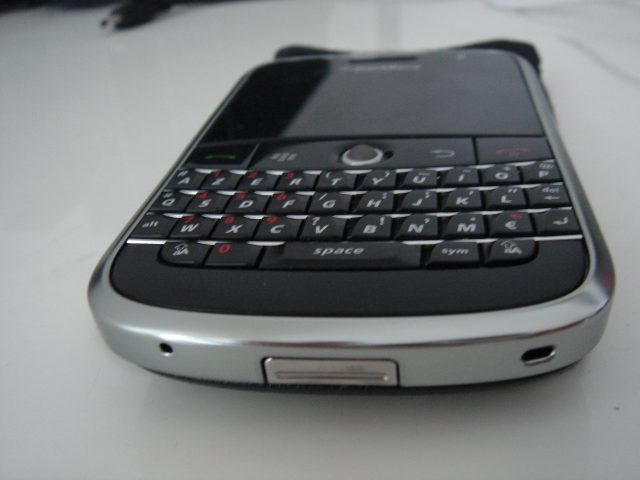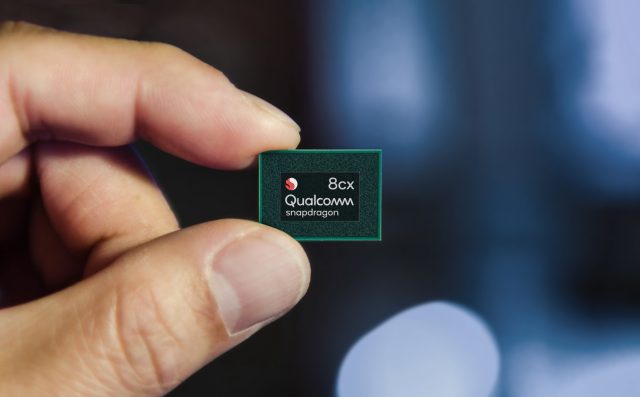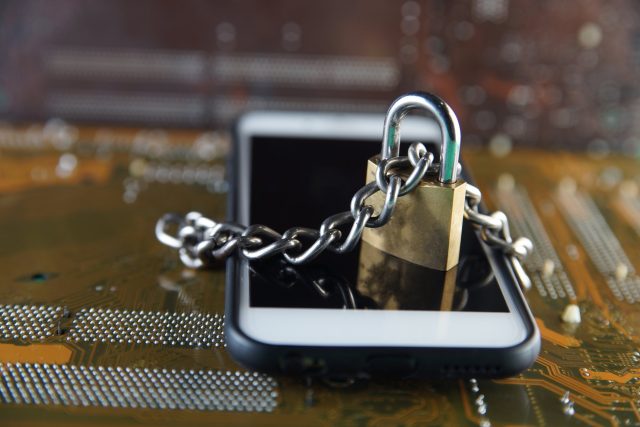
In 2005, Apple contacted Qualcomm as a potential supplier for modem chips in the first iPhone. Qualcomm's response was unusual: a letter demanding that Apple sign a patent licensing agreement before Qualcomm would even consider supplying chips.
"I'd spent 20 years in the industry, I had never seen a letter like this," said Tony Blevins, Apple's vice president of procurement.
Most suppliers are eager to talk to new customers—especially customers as big and prestigious as Apple. But Qualcomm wasn't like other suppliers; it enjoyed a dominant position in the market for cellular chips. That gave Qualcomm a lot of leverage, and the company wasn't afraid to use it.
Blevins' comments came when he testified earlier this year in the Federal Trade Commission's blockbuster antitrust case against Qualcomm. The FTC filed this lawsuit in 2017 partly at the urging of Apple, which had chafed under Qualcomm's wireless chip dominance for a decade.
Last week, a California federal judge provided the FTC and Apple with sweet vindication. In a scathing 233-page opinion [PDF], Judge Lucy Koh ruled that Qualcomm's aggressive licensing tactics had violated American antitrust law.
I read every word of Judge Koh's book-length opinion, which portrays Qualcomm as a ruthless monopolist. The legal document outlines a nearly 20-year history of overcharging smartphone makers for cellular chips. Qualcomm structured its contracts with smartphone makers in ways that made it almost impossible for other chipmakers to challenge Qualcomm's dominance. Customers who didn't go along with Qualcomm's one-sided terms were threatened with an abrupt and crippling loss of access to modem chips.
"Qualcomm has monopoly power over certain cell phone chips, and they use that monopoly power to charge people too much money," says Charles Duan, a patent expert at the free-market R Street Institute. "Instead of just charging more for the chips themselves, they required people to buy a patent license and overcharged for the patent license."
Now, all of that dominance might be coming to an end. In her ruling, Koh ordered Qualcomm to stop threatening customers with chip cutoffs. Qualcomm must now re-negotiate all of its agreements with customers and license its patents to competitors on reasonable terms. And if Koh's ruling survives the appeals process, it could produce a truly competitive market for wireless chips for the first time in this century.
Qualcomm’s perfect profit machine

Different cellular networks operate on different wireless networking standards, and these standards change every few years. For much of the last 20 years, Qualcomm has enjoyed a lead—and in some cases a stranglehold—on chips that support major cellular standards. So if a smartphone company aspired to sell its wares around the world, it had little choice but to do business with Qualcomm.
For example, in the early 2010s Qualcomm enjoyed a big lead on chips for the CDMA standards favored by Verizon and Sprint in the US and some other carriers overseas. Qualcomm Chief Technology Officer James Thompson bluntly explained in an internal 2014 email to CEO Steve Mollenkopf how this gave the company leverage over Apple.
"We are the only supplier today that can give them a global launch," Thompson wrote, according to court documents. "In fact, without us they would lose big parts of North America, Japan and China. That would really hurt them."
It wasn't just Apple. BlackBerry was in a similar predicament around 2010. In a deposition, BlackBerry executive John Grubbs stated that without access to Qualcomm's chips, "30 percent of our device sales would have gone away overnight if we couldn't have supplied CDMA devices."
Over the last two decades, Qualcomm has had deals in place with most of the leading cell phone makers, including LG, Sony, Samsung, Huawei, Motorola, Lenovo, ZTE, and Nokia. These deals gave Qualcomm enormous leverage over these companies—leverage that allowed Qualcomm to extract patent royalty rates that were far higher than those earned by other companies with similar patent portfolios.
Qualcomm's patent licensing fees were calculated based on the value of the entire phone, not just the value of chips that embodied Qualcomm's patented technology. This effectively meant that Qualcomm got a cut of every component of a smartphone—most of which had nothing to do with Qualcomm's cellular patents.
"Qualcomm charges us more than everybody else put together," Apple executive Jeff Williams said. "We've never seen such a significant licensing fee tied to any other IP we license," said Motorola's Todd Madderom.
Internal Qualcomm documents supported these claims. One showed that Qualcomm's patent licensing operation brought in $7.7 billion in 2016—more than the combined patent licensing revenue of 12 other companies with significant patent portfolios.
No license, no chips

These high royalties reflected an unusual negotiating tactic called "no license, no chips." No one could buy Qualcomm's cellular chips unless they first signed a license to Qualcomm's patent portfolio. And the terms of these patent deals were heavily tilted in Qualcomm's favor.
Once a phone maker had signed its first deal with Qualcomm, Qualcomm gained even more leverage. Qualcomm had the right to unilaterally terminate a smartphone maker's chip supply once the patent licensing deal expired.
"If we are unable to source the modem, we are unable to ship the handset," said Motorola executive Todd Madderom in a deposition. "It takes many months of engineering work to design a replacement solution, if there is even a viable one on the market that supports the need."
That made Qualcomm's customers extremely vulnerable as they neared the expiration of a patent licensing deal. If a customer tried to negotiate more favorable terms—to say nothing of formally challenging Qualcomm's patent claims in court—Qualcomm could abruptly cut off the company's chip supply.
"We explained that we were contemplating terminating the license," Lenovo executive Ira Blumberg testified during the trial. A senior Qualcomm executive "was very calm about it, and said we should feel free to do that, but if we did, we would no longer be able to purchase Qualcomm chips."
"You're looking at months and months, if not a year or more, without supply," Blumberg said in a deposition. That "would be, if not fatal, then nearly fatal to almost any company in this business."
Judge Koh found that Qualcomm used this tactic over and over again over the last 20 years: Qualcomm threatened to cut off Samsung's chip supply in 2001, LG's chip supply in 2004, Sony and ZTE's chip supplies in 2012, Huawei and Lenovo's chip supplies in 2013, and Motorola's chip supply in 2015.
Qualcomm’s chip deals boxed out competitors

An obvious question is how Qualcomm maintained its stranglehold over the supply of modem chips. Partly, Qualcomm employed talented engineers and spent billions of dollars keeping its chips on the cutting edge.
Qualcomm also bolstered its dominant position by selling systems on a chip that included a CPU and other functions as well as modem functionality. This yielded significant cost and power savings, and it was hard for smaller chipmakers to compete with.
But besides these technical reasons, Qualcomm also structured its agreements with customers to make it difficult for other companies to break into the cellular modem chip business.
Qualcomm's first weapon against competitors: patent licensing terms requiring customers to pay a royalty on every phone sold—not just phones that contained Qualcomm's wireless chips. This gave Qualcomm an inherent advantage in competition with other chipmakers. If another chipmaker tried to undercut Qualcomm's chips on price, Qualcomm could easily afford to cut the price of its own chips, knowing that the customer would still be paying Qualcomm a hefty patent licensing fee on every phone.
Judge Koh draws a direct parallel to licensing behavior that got Microsoft in legal trouble in the 1990s. Microsoft would offer PC makers a discount if they agreed to pay Microsoft a licensing fee for every PC sold—whether or not the PC shipped with a copy of MS-DOS. This effectively meant that a PC maker had to pay twice if it shipped a PC running a non-Microsoft operating system. In 1999, a federal judge ruled that a reasonable jury could conclude this arrangement violated antitrust law by making it difficult for Microsoft's competitors to break into the market.
And some of Qualcomm's licensing deals included terms that explicitly discouraged companies from using non-Qualcomm wireless chips. Qualcomm would offer cell phone makers rebates on every Qualcomm chip they sold. But cell phone makers would only get those rebates if they used Qualcomm chips for at least 85 percent—or in some cases even 100 percent—of the phones they sold.
For example, Apple signed a deal with Qualcomm in 2013 that effectively guaranteed that Apple would exclusively use Qualcomm's wireless chips. Under the deal, Qualcomm paid Apple hundreds of millions of dollars in rebates and marketing incentives between 2013 and 2016. However, Qualcomm would stop making those payments if Apple started selling an iPhone or iPad with a non-Qualcomm cellular chip.
Apple was even required to pay back some of those funds if it used non-Qualcomm cellular chips before February 2016. One internal Qualcomm email calculated that Apple would owe $645 million if it launched an iPhone with a non-Qualcomm cellular chip in 2015.
Qualcomm made similar deals with other major cell phone makers. In 2003, Qualcomm signed a 10-year deal granting Huawei a reduced royalty rate of 2.65 percent if Huawei purchased 100 percent of its CDMA chips for the Chinese market from Qualcomm. If Huawei bought non-Qualcomm CDMA chips, the royalty rate jumped to five percent or more.
A 2004 deal gave LG rebates if LG purchased at least 85 percent of its CDMA chips from Qualcomm. The deal also required LG to pay a higher patent royalty rate when it sold phones with non-Qualcomm cellular chips. A 2018 deal makes incentive payments to Samsung if the company buys 100 percent of its "premium" cellular chips from Qualcomm—as well as lower thresholds (the exact percentages are redacted) for lower-tier chips.
reader comments
303